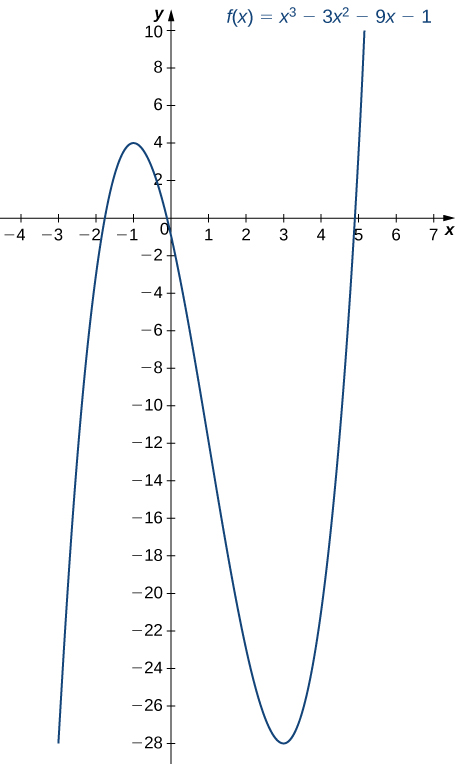| << Chapter < Page | Chapter >> Page > |
Using [link] , we summarize the main results regarding local extrema.
This result is known as the first derivative test .
Suppose that is a continuous function over an interval containing a critical point If is differentiable over except possibly at point then satisfies one of the following descriptions:
We can summarize the first derivative test as a strategy for locating local extrema.
Consider a function that is continuous over an interval
Now let’s look at how to use this strategy to locate all local extrema for particular functions.
Use the first derivative test to find the location of all local extrema for Use a graphing utility to confirm your results.
Step 1. The derivative is To find the critical points, we need to find where Factoring the polynomial, we conclude that the critical points must satisfy
Therefore, the critical points are Now divide the interval into the smaller intervals
Step 2. Since is a continuous function, to determine the sign of over each subinterval, it suffices to choose a point over each of the intervals and determine the sign of at each of these points. For example, let’s choose as test points.
| Interval | Test Point | Sign of at Test Point | Conclusion |
|---|---|---|---|
| is increasing. | |||
| is decreasing. | |||
| is increasing. |
Step 3. Since switches sign from positive to negative as increases through has a local maximum at Since switches sign from negative to positive as increases through has a local minimum at These analytical results agree with the following graph.


Notification Switch
Would you like to follow the 'Calculus volume 1' conversation and receive update notifications?